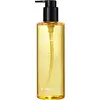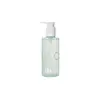What's inside
What's inside
 Key Ingredients
Key Ingredients

 Benefits
Benefits

 Concerns
Concerns

 Ingredients Side-by-side
Ingredients Side-by-side

Glycine Soja Oil
EmollientEthylhexyl Palmitate
EmollientTriethylhexanoin
MaskingPEG-20 Glyceryl Triisostearate
EmollientHelianthus Annuus Seed Oil
EmollientCaprylic/Capric Triglyceride
Masking1,2-Hexanediol
Skin ConditioningLitsea Cubeba Fruit Oil
MaskingPentaerythrityl Tetra-Di-T-Butyl Hydroxyhydrocinnamate
AntioxidantTocopheryl Linoleate
AntioxidantCitrus Aurantium Dulcis Peel Oil
MaskingLavandula Angustifolia Oil
MaskingPelargonium Graveolens Oil
MaskingWater
Skin ConditioningCanarium Luzonicum Gum Nonvolatiles
MaskingRosmarinus Officinalis Leaf Oil
MaskingEucalyptus Globulus Leaf Oil
PerfumingCitrus Aurantium Amara Flower Oil
MaskingAnthemis Nobilis Flower Oil
MaskingGluconolactone
Skin ConditioningPrunus Armeniaca Kernel Oil
MaskingSqualane
EmollientCamellia Kissi Seed Oil
EmollientSimmondsia Chinensis Seed Oil
EmollientButylene Glycol
HumectantAllantoin
Skin ConditioningMelaleuca Alternifolia Leaf Oil
AntioxidantGlycerin
HumectantCamellia Sinensis Leaf Extract
AntimicrobialCamellia Japonica Flower Extract
EmollientRhus Semialata Gall Extract
Skin ConditioningOxygen
Skin ConditioningNelumbium Speciosum Flower Extract
Skin ConditioningPentylene Glycol
Skin ConditioningGlycine Soja Oil, Ethylhexyl Palmitate, Triethylhexanoin, PEG-20 Glyceryl Triisostearate, Helianthus Annuus Seed Oil, Caprylic/Capric Triglyceride, 1,2-Hexanediol, Litsea Cubeba Fruit Oil, Pentaerythrityl Tetra-Di-T-Butyl Hydroxyhydrocinnamate, Tocopheryl Linoleate, Citrus Aurantium Dulcis Peel Oil, Lavandula Angustifolia Oil, Pelargonium Graveolens Oil, Water, Canarium Luzonicum Gum Nonvolatiles, Rosmarinus Officinalis Leaf Oil, Eucalyptus Globulus Leaf Oil, Citrus Aurantium Amara Flower Oil, Anthemis Nobilis Flower Oil, Gluconolactone, Prunus Armeniaca Kernel Oil, Squalane, Camellia Kissi Seed Oil, Simmondsia Chinensis Seed Oil, Butylene Glycol, Allantoin, Melaleuca Alternifolia Leaf Oil, Glycerin, Camellia Sinensis Leaf Extract, Camellia Japonica Flower Extract, Rhus Semialata Gall Extract, Oxygen, Nelumbium Speciosum Flower Extract, Pentylene Glycol
Ethylhexyl Palmitate
EmollientCetyl Ethylhexanoate
EmollientSorbeth-30 Tetraoleate
EmulsifyingIsododecane
EmollientGlycine Soja Oil
EmollientSorbitan Sesquioleate
EmulsifyingCaprylic/Capric Triglyceride
MaskingSesamum Indicum Seed Oil
EmollientSimmondsia Chinensis Seed Oil
EmollientCapryloyl Salicylic Acid
ExfoliatingOenothera Biennis Root Extract
Skin ConditioningPinus Palustris Leaf Extract
TonicPueraria Lobata Root Extract
HumectantUlmus Davidiana Root Extract
Skin ConditioningCalophyllum Inophyllum Seed Oil
AntimicrobialParfum
MaskingEthylhexyl Palmitate, Cetyl Ethylhexanoate, Sorbeth-30 Tetraoleate, Isododecane, Glycine Soja Oil, Sorbitan Sesquioleate, Caprylic/Capric Triglyceride, Sesamum Indicum Seed Oil, Simmondsia Chinensis Seed Oil, Capryloyl Salicylic Acid, Oenothera Biennis Root Extract, Pinus Palustris Leaf Extract, Pueraria Lobata Root Extract, Ulmus Davidiana Root Extract, Calophyllum Inophyllum Seed Oil, Parfum
 Reviews
Reviews

Ingredients Explained
These ingredients are found in both products.
Ingredients higher up in an ingredient list are typically present in a larger amount.
This ingredient is an emollient, solvent, and texture enhancer. It is considered a skin-softener by helping the skin prevent moisture loss.
It helps thicken a product's formula and makes it easier to spread by dissolving clumping compounds.
Caprylic Triglyceride is made by combining glycerin with coconut oil, forming a clear liquid.
While there is an assumption Caprylic Triglyceride can clog pores due to it being derived from coconut oil, there is no research supporting this.
Learn more about Caprylic/Capric TriglycerideEthylhexyl Palmitate, also known as octyl palmitate, is created from 2-ethylhexyl alcohol and palmitic acid. It is a fatty acid ester.
The fatty acid content of Ethylhexyl Palmitate makes it an emollient. Emollients help soften and hydrate your skin by trapping moisture within.
Ethylhexyl Palmitate is also used to help improve the texture of cosmetics. It helps other ingredient dissolve in products and help disperse ingredients more evenly.
You'll likely find this ingredient in sunscreen, as it is often used to mix UV-blocking ingredients such as avobenzone and ethylhexyl triazone.
It can also help stabilize the fragrances in a product as a fragrance fixative.
Ethylhexyl Palmitate can be used to substitute mineral oil.
Due to its high fatty acid content, it may not be fungal-acne safe.
Learn more about Ethylhexyl PalmitateGlycine Soja Oil comes from the soybean. Glycine Soja is native to eastern Asia.
Soybean oil is an emollient. It is rich in antioxidants and fatty acids including palmitic, stearic, oleic, and linoleic acids.
As an emollient, the fatty acids in soybean oil helps keep your skin soft and hydrated. It does so by creating a film on top that traps moisture in.
Soybean oil is also rich in vitamin E, a potent antioxidant. Vitamin E is also anti-inflammatory and provides a soothing effect.
Studies show soy may help fade hyperpigmentation from UVB. It does so by disrupting the melanin process from UVB induced skin inflammation.
This ingredient may not be malassezia folliculitis, or fungal-acne, safe.
Soybeans are rich in proteins and are part of the legume family. Foods made with soybeans include tofu, soymilk, edamame, miso, and soy sauce.
Learn more about Glycine Soja OilThis oil comes from the seeds of the desert shrub called Jojoba. It is more commonly known as jojoba oil, a non-comedogenic oil.
Jojoba oil does not contain fragrance and has many fatty-acids, making it a great soothing ingredient.
It also contains Vitamin E, a great moisturizing ingredient. Vitamin E is also an antioxidant and protects your skin against oxidative damage.
This ingredient humectant properties, meaning it helps draw moisture from the air. This helps keep your skin hydrated.
While jojoba has antibacterial properties, it is only able to kill some strains of bacteria.
Studies also show it helps in wound healing. In fact, Indigenous cultures have used jojoba as a moisturizer and to help treat burns for centuries.
Fun fact: Jojoba oil similar to natural human skin sebum, so it has a great effect on dry skin. It is also promising with helping to regulate sebum production.
Due to its fatty acid content, Jojoba oil may not be fungal acne safe. We recommend speaking with a professional if you have any concerns.
Learn more about Simmondsia Chinensis Seed Oil